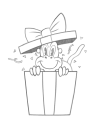$127.20
$159
You save $31.8
LESSON NOTES
When I was a full time student, the thing that helped me improve my line quality the most was doing master studies. In this lesson I'll show you how to approach a study of one of Jeff Watt's skulls. This is not to replicate it exactly, but rather to learn from Jeff’s technique and decision-making process. By studying a master, we can gain insights into their line quality, shape design, and overall approach to drawing. If you enjoyed this demo I did another study of Roberto De La Torre which you can find in the premium course.
Related Links:
How to Study Masters - Draftsmen S2E17
13 Types of Lines and How to Use Them
Line Weight Communicates So Much More Than You Think
How to Draw Confident Lines - The Tapered Stroke
DOWNLOADS
demo-line-master-studies-jeff-watts.mp4
1 GB
demo-line-master-studies-jeff-watts-transcript-english.txt
34 kB
demo-line-master-studies-jeff-watts-transcript-spanish.txt
35 kB
demo-line-master-studies-jeff-watts-captions-english.srt
55 kB
demo-line-master-studies-jeff-watts-captions-spanish.srt
57 kB
COMMENTS
A study of Eliza nova, a big thing I learned from this demo was to study the way the artist uses there pencil/tool
i felt like I was copying the lines in my first attempt of Kim jung gi but not copying the way they were made, this time I tried to use my pencil in the same way Eliza used her tool to make the lines, lots of room to grow
I studied another David Malan portrait. He uses a lot of lines for shading. I think this is his style and I really like that. I tried to replicate those lines but when I do that, they look just random lines instead of integrated with face. Another challenge was that I used graphite pencils only -perhaps I should use charcoal too.
I sharpened a charcoal pencil for this one. Wow, what a difference. I can easily create the different line types. Only problem is that the sharp lines are too dark and contrast too much with the light blurred lines. Otherwise, I’m pretty happy with how this turned out. Going to use this pencil more often.
I loved having to change the way I hold the pencil to try and replicate some of the lines. The whole process was quite experimental, but I loved trying it.
My first skull ever!
Ignore the proportions. I tried, but got lost on the way as I focused on the lines. There’s really so much variety! I struggled with my tools a bit, but that’s what I had: print paper and these pentel woodless charcoal.
Question: when you want to draw in charcoal but for a drawing you want to frame ( give or sell) which paper do you use? I know newsprint is not archival, so I’m curious, can you get similar lines on a “proper paper”?
Quite the challenge but I really like how he guides us through it. It seems impossible in the beginning but it wasn't so bad in the end. Such a great way to learn!
Just terribly hard to find images with enough resolution online to make a master study out of.
hi everyone. can someone direct me as to where i can get a printable refrence of the jeff watts skull? thank you
I did master studies of Kim Jong Gi for a few days. But in the end I followed the video, mimicking Stan's pencil grip to get a feel for different positions. Result was the most dynamic drawing I've ever done
I studied Jeff Watts, I liked the charcoal pencil technique. I would like to continue learning about.
Thought this was cool, using white and black line weight for lighting. The artists calls themselves Nosoart. Found it a really lovely image and was fun to learn from
Not sure name of artist, found him in comment section of last vid, was a fun challenge and pleased with result, some wonkey anatomy but learned loads. I am using clip studio, still learning the pencils, think maybe the original was inked. gotta learn the brush engine cause I am not sure what I am doing and only have 2 pencil choices
































